
Backpacking & Fishing Combined: Your Ultimate Outdoor Guide
Reading Time: about
Welcome to the ultimate guide to backpacking and fishing – where every step is an adventure and every catch a story! Imagine the thrill of navigating through serene trails, with the promise of a tranquil fishing spot just over the next ridge.
This comprehensive guide is your gateway to mastering the art of blending two of nature's most rewarding activities: backpacking and fishing. Whether you're a seasoned adventurer or a curious beginner, our in-depth insights, expert tips, and practical advice are designed to equip you with the knowledge and confidence needed to embark on your next wilderness journey.
So, lace up your boots, prep your fishing gear, and let’s dive into the world of backpacking and fishing, where every trail leads to discovery and every cast brings a new surprise!
I. Preparing for Your Adventure
1. Choosing the Right Gear
a. Essential Backpacking Equipment
Backpack Selection: Size, Fit, and Features
When we embark on a backpacking journey, the backpack becomes our closest companion. It's essential to select one that's not just roomy enough for our needs but also comfortable to carry. Look for a pack with adjustable straps and a supportive waist belt to distribute the weight evenly.
The capacity, typically measured in liters, varies depending on the length of your trip. For a weekend adventure, a 30-50 liter backpack should suffice, while longer treks might require 60 liters or more. Additionally, pay attention to features like water resistance, pockets for organization, and loops for attaching gear.
Shelter Options: Tents, Hammocks, and Bivouacs
Your choice of shelter is pivotal in ensuring a restful night. Tents are the go-to for most backpackers, offering protection from the elements. Consider the weight, space, and ease of setup.
If you're trekking into areas with trees and prefer sleeping off the ground, hammocks are an excellent lightweight alternative. They're perfect for warm, bug-free environments. For the minimalist backpacker, a bivouac sack is a compact and lightweight shelter option, though it offers limited space and protection.
Sleeping Systems: Sleeping Bags and Pads
A good night's sleep is essential for a successful trip. A sleeping bag's temperature rating should match the coldest temperatures you expect to encounter.
Down-filled bags are warmer and lighter but less effective when wet, compared to synthetic fills. Pair your sleeping bag with an insulated sleeping pad, not just for comfort but also for warmth, as it provides a barrier between you and the cold ground.
Clothing Essentials: Layering for Variable Conditions
The key to comfort in the wilderness is layering. Start with moisture-wicking base layers to keep you dry. Insulating layers, like fleece or down jackets, provide warmth, while a waterproof and breathable outer layer protects against wind and rain. Don't forget essentials like hats, gloves, and sturdy hiking boots.
b. Selecting Suitable Fishing Gear for Backpacking
Lightweight and Collapsible Rods
For fishing enthusiasts, a portable, lightweight rod is a game-changer. Collapsible or telescopic rods are perfect for backpacking, as they take up minimal space. These rods maintain functionality while being convenient for travel.
Reel and Line Choices for Efficiency
A reliable reel is as important as the rod. Look for a lightweight, durable reel that matches your rod and fishing style. The line you choose should be appropriate for the type of fishing you'll be doing – whether it's fly fishing or spinning.
Tackle Selection: Balancing Variety and Necessity
While it's tempting to bring a variety of tackle, remember that every ounce counts when backpacking. Focus on versatile lures and a small selection of hooks, sinkers, and bobbers. Research the fish species in your destination to target your selection effectively.

2. Planning Your Trip
a. Identifying Ideal Locations for Backpacking and Fishing
Finding the perfect spot for both backpacking and fishing can be thrilling. Look for trails that offer access to lakes, rivers, or streams. Websites and forums dedicated to hiking and fishing can be invaluable resources. Remember to consider the terrain and your fitness level.
Researching Trails with Water Bodies
Once you've identified potential locations, delve deeper. Study maps and read trip reports to understand the trail conditions and water access points. This research not only aids in navigation but also in anticipating the kind of fishing opportunities you might encounter.
Regulations and Permits for Fishing in Different Regions
Different regions have different rules. Always check local fishing regulations and obtain the necessary permits. This not only ensures a hassle-free experience but also helps in conserving fish populations and their habitats.
b. Understanding Weather and Seasonal Considerations
Seasonal Fish Behavior and Migration Patterns
Fish behavior changes with the seasons. Understanding these patterns can greatly enhance your fishing success. For instance, trout are more active in cooler temperatures, while bass might be more accessible in warmer months.
Weather Impacts on Backpacking and Fishing
Weather not only affects your comfort and safety while backpacking but also influences fish behavior. Postpone your trip if severe weather is forecasted. Always pack for unexpected weather changes and know how different weather conditions affect the fish in your chosen area.
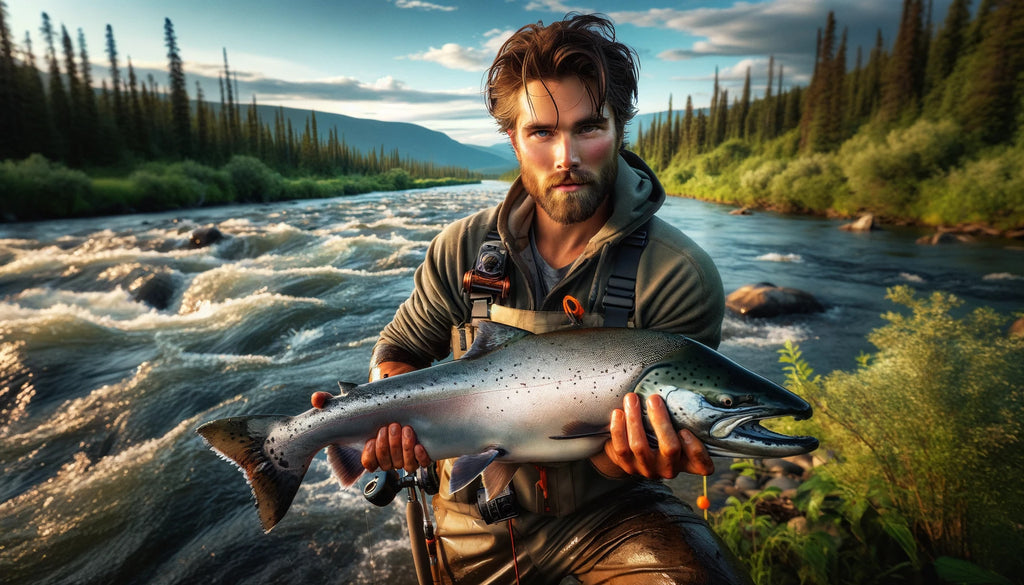
3. Training and Fitness
a. Physical Preparation for Backpacking
Backpacking can be physically demanding. To prepare, focus on cardiovascular fitness and strength training. Regular hikes, especially with a loaded backpack, can acclimate your body to the rigors of the trail.
Endurance Training and Hiking Exercises
Incorporate endurance-building activities like jogging, cycling, or swimming into your routine. Strength exercises, particularly for the legs, back, and core, will also be beneficial.
Building Strength for Carrying Gear
Strength training is crucial, especially for your back and shoulders, which bear the brunt of your pack's weight. Exercises like deadlifts, squats, and shoulder presses are particularly effective.
b. Skills Training for Fishing During Hikes
Basic Fishing Techniques
If you're new to fishing, start with basic casting techniques and knot tying. Local fishing clubs or outdoor stores often offer classes that can be incredibly helpful.
Wilderness Fishing Etiquette and Regulations
It's essential to fish responsibly. This means understanding and adhering to catch-and-release practices, being mindful of the environment, and respecting other anglers' space.
We've explored how careful planning and preparation can significantly enhance your backpacking and fishing adventure. Remember, the key is to find a balance between being well-prepared and flexible enough to adapt to the unpredictable nature of the great outdoors. In the next section, we'll delve into the intricacies of navigation, setting up camp, and managing food and water in the wilderness.

II. Backpacking Essentials
1. Navigation and Trail Basics
When we embark on a backpacking adventure, navigation is our compass to the wonders of the great outdoors. Let's delve into the essentials of effective navigation, ensuring that our journey is not only exhilarating but also safe.
a. Using Maps and GPS for Effective Navigation
In the realm of backpacking, understanding how to navigate with maps and GPS devices is crucial. Traditional topographic maps provide an invaluable overview of the terrain, highlighting elevations, water sources, and other key landmarks. I always recommend familiarizing yourself with reading these maps before setting out. This includes interpreting contour lines for understanding elevation changes and recognizing symbols for campsites, trails, and water bodies.
In contrast, GPS devices offer real-time location tracking and can be incredibly helpful, especially in areas where the trail is not well-marked. However, relying solely on technology can be risky, as batteries can die or signals can be lost. Therefore, it's wise to carry a physical map and compass as backups. Combining these tools, you can confidently navigate through the most remote trails.
Reading Topographic Maps and Trail Markers
Reading a topographic map is like unlocking a treasure chest of information about the landscape you're traversing. These maps show three-dimensional terrain on a two-dimensional surface, using contour lines to represent elevation. The closer these lines are, the steeper the terrain. Additionally, familiarize yourself with the color codes and symbols specific to your map, as these indicate different types of trails, water bodies, and terrain features.
Trail markers, or blazes, are another critical aspect of navigation. These are usually painted on trees or rocks to guide hikers along the trail. Paying attention to these markers is essential to stay on track, as trails can sometimes become less distinct.
Technology vs. Traditional Navigation Tools
While GPS technology has revolutionized outdoor navigation, traditional tools like maps and compasses have not lost their relevance. In fact, they are often more reliable in areas with poor satellite reception or in situations where electronic devices fail. I always advise backpackers to be proficient in both forms of navigation. Being able to use a compass in conjunction with a map is an invaluable skill, especially in challenging or unfamiliar terrain.
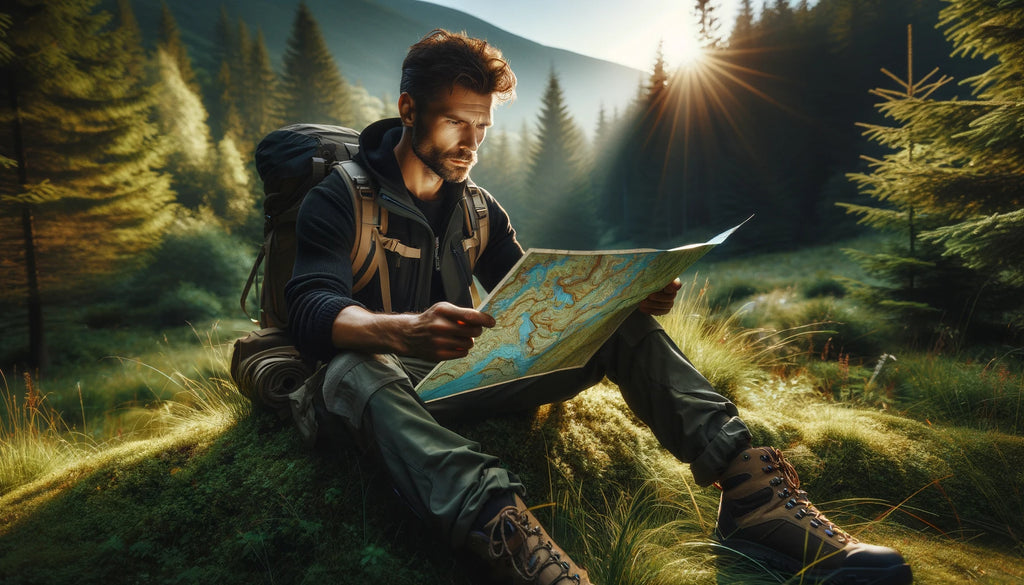
b. Trail Etiquette and Safety Tips
Trail etiquette is not just about being polite; it's about ensuring the safety and enjoyment of everyone on the trail. This includes understanding right-of-way rules – for example, hikers going uphill have priority over those descending, and hikers should yield to equestrian users.
Moreover, staying on marked trails is not only a matter of etiquette but also of safety. Straying from the trail can lead to getting lost and can also damage the delicate ecosystem.
Right-of-Way Rules
Understanding and respecting right-of-way rules is essential for a harmonious trail experience. Generally, hikers going uphill have the right-of-way, as they may have a limited field of view and may be working harder physically. Bikers are usually expected to yield to hikers, while everyone yields to horses for safety reasons.
Leave No Trace Principles
The Leave No Trace principles are a set of guidelines to minimize our impact on the environment while enjoying the great outdoors. These include principles like planning ahead and preparing, traveling and camping on durable surfaces, disposing of waste properly, leaving what you find, minimizing campfire impacts, respecting wildlife, and being considerate of other visitors.
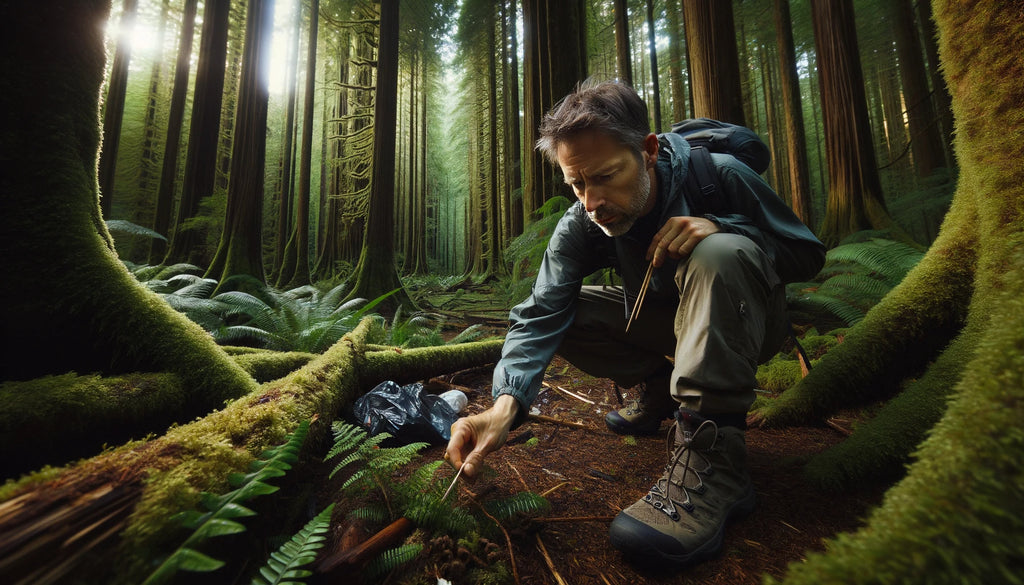
2. Shelter and Camping Skills
a. Setting Up Camp in the Wilderness
Finding the perfect spot to set up camp is both an art and a science. Look for areas that are already established for camping, avoiding virgin terrain to minimize your impact on the environment. Ensure the site is flat and free of overhead hazards like loose branches.
Finding Suitable and Legal Camp Spots
Before setting up camp, it's crucial to know the regulations of the area you're in. Some regions require permits, and others may have restrictions on where you can camp. National parks, for instance, often have designated camping areas to protect the ecosystem. Always check local guidelines before your trip.
Quick and Efficient Camp Setup Techniques
Mastering quick and efficient camp setup is essential for any backpacker. Practice setting up your tent before you leave on your trip – this not only saves time but also ensures you’re not caught unprepared if you need to set up in the dark or bad weather. Secure your tent properly, using all guy lines and stakes to withstand wind and rain.
b. Minimizing Environmental Impact While Camping
Camping with minimal environmental impact involves choosing existing camp spots, using a stove instead of making a campfire, and ensuring that all waste is packed out or disposed of properly. This also means using biodegradable soap for cleaning and being mindful of where you wash dishes or bathe to avoid contaminating water sources.
Waste Management and Disposal
Proper waste management is a cornerstone of responsible backpacking. This includes packing out all trash, leftover food, and litter. Human waste should be buried in a small hole at least 6-8 inches deep and 200 feet away from water sources, trails, and camp areas. Always use toilet paper sparingly and pack it out in a ziplock bag.
Protecting Local Flora and Fauna
As backpackers, we have a responsibility to protect the ecosystems we enjoy. This means staying on trails to avoid damaging native plants, not feeding wildlife, and observing animals from a distance. Remember, we are visitors in their home.
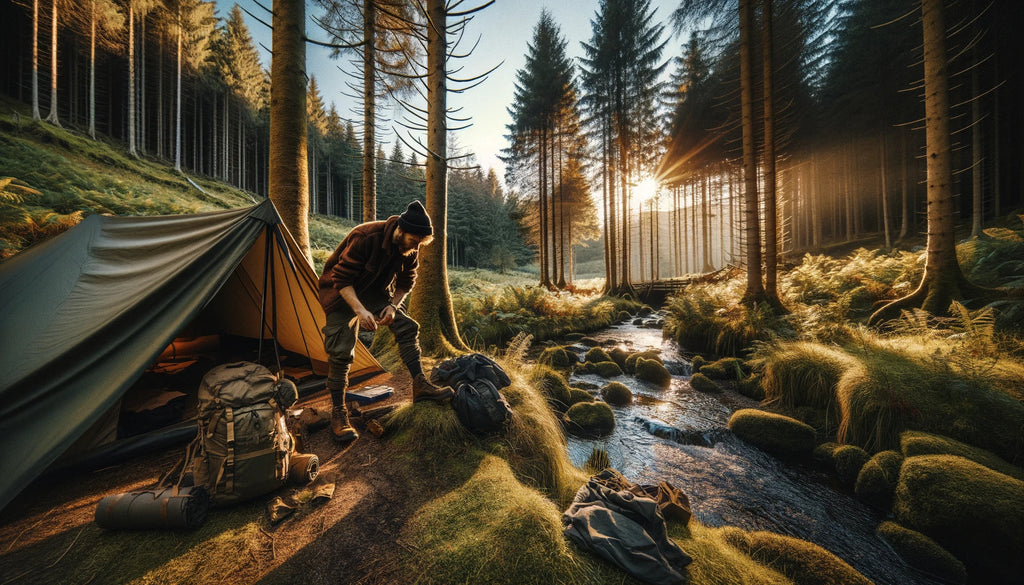
3. Food and Water Management
a. Efficient Packing of Food and Water
Packing food and water efficiently is critical for any backpacking trip. Choose foods that are lightweight, calorie-dense, and easy to prepare. Dehydrated meals, nuts, energy bars, and jerky are great options. For water, carry enough for your immediate needs and know where you can find water sources along your route.
Caloric Needs and Meal Planning
Understanding your caloric needs is key to maintaining energy throughout your hike. Backpacking can burn a lot of calories, so plan meals that are rich in carbohydrates, proteins, and fats. Plan your meals day-by-day, and pack an extra day’s supply as a safety measure.
Lightweight and Nutritious Food Options
Selecting lightweight and nutritious food is crucial for backpacking. Opt for foods that have a good balance of nutrients and are easy to carry. Instant oatmeal, dried fruits, nuts, and instant coffee are great for breakfast. Pack energy-dense snacks like trail mix, granola bars, and fruit snacks for throughout the day.
b. Water Purification Methods While Backpacking
Safe drinking water is a must on the trail. There are several methods for purifying water, including boiling, chemical purifiers, and filtration systems. Each method has its pros and cons, so choose one that suits your needs and the conditions you expect to encounter.
Different Purification Techniques
- Boiling is the most reliable method, but it requires a heat source and time.
- Chemical purifiers, like iodine or chlorine tablets, are lightweight and easy to use, but they can leave an aftertaste and take time to be effective.
- Filtration systems, such as pump filters or gravity filters, are efficient and can provide a taste-free experience but require maintenance and can be bulkier.
Locating Safe Water Sources
Finding safe water sources is crucial. Always source water from flowing streams or springs rather than stagnant water, and purify it before drinking. Be aware of your surroundings and avoid collecting water downstream from trails or campsites to minimize the risk of contamination.
Mastering the essentials of backpacking, from navigation to setting up camp and managing food and water, is key to a successful and enjoyable adventure. By embracing these skills and adhering to Leave No Trace principles, we not only ensure a memorable journey but also safeguard the natural beauty for future explorers.

III. The Fishing Experience
1. Techniques in Wilderness Fishing
When we immerse ourselves in the art of fishing amidst the wild, we encounter two primary environments: freshwater and saltwater. Each presents its unique challenges and joys, necessitating different approaches and techniques.
a. Freshwater vs. Saltwater Fishing Techniques
Understanding the distinction between freshwater and saltwater fishing is pivotal. Freshwater fishing, often in rivers, lakes, and streams, requires a nuanced approach. The water is usually calmer, and the fish are more influenced by seasonal changes and water temperature.
Saltwater fishing, on the other hand, can be more challenging due to the vastness and unpredictability of the ocean. It demands a sturdier gear setup and a keen understanding of tides and marine weather patterns.
Lure and Bait Choices for Each Water Type
In freshwater environments, natural baits like worms and minnows are often effective. Artificial lures, such as spinners and soft plastics, mimic the natural prey of freshwater fish.
In saltwater, live baits like shrimp or cut bait can be more successful, while artificial lures need to withstand the corrosive saltwater and often mimic the movement of small fish or crustaceans.
b. Fly Fishing and Other Popular Methods
Fly fishing is a revered method, especially in freshwater settings. It involves using a lightweight lure, or 'fly,' which requires skill and practice to master. For those starting in fly fishing, understanding the basics of casting and choosing the right fly is essential.
Other popular methods include spinning, baitcasting, and trolling, each suited to different types of water and targeted species.
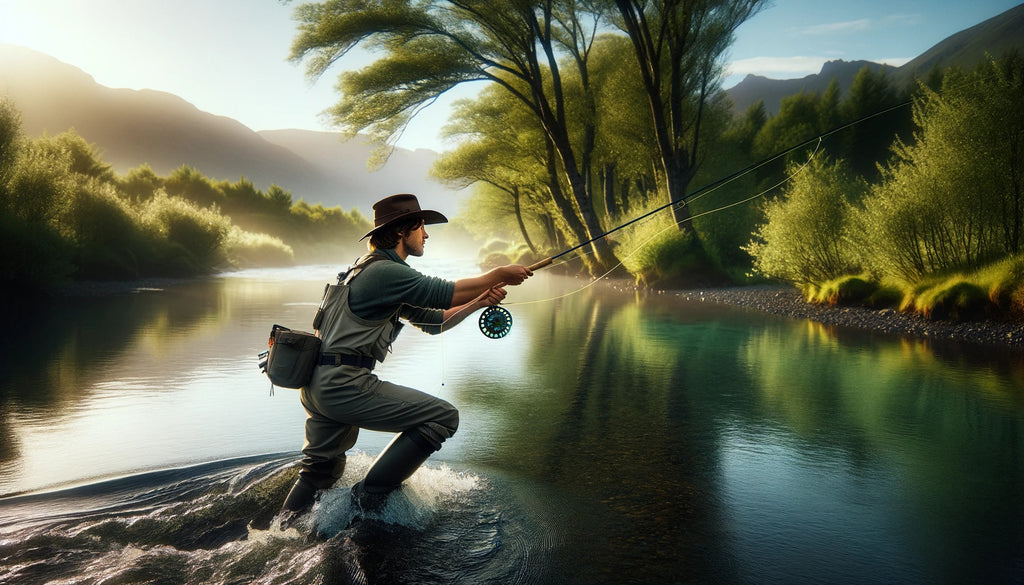
2. Understanding Local Fish Species
One of the joys of wilderness fishing is the connection with nature, part of which involves understanding and respecting the local fish species.
a. Identifying and Targeting Local Fish
Before casting your line, it's wise to research the local fish species in your chosen destination. This knowledge not only enhances your chances of a successful catch but also enriches your outdoor experience. Understanding the habits and habitats of these species allows you to adapt your techniques and tackle accordingly.
Researching Local Species and Their Habitats
Different species thrive in different environments. Some prefer the shallows, while others lurk in the depths. Learning about these preferences helps in choosing the right spot and technique. Also, being aware of the local regulations and seasonal patterns of fish is crucial for a responsible fishing experience.
Adaptation of Techniques to Target Specific Fish
Adapting your approach based on the fish you're targeting is key. For instance, trout in mountain streams require a different approach than bass in a lake. This adaptability not only increases your catch rate but also makes the experience more engaging and rewarding.
b. Sustainable and Ethical Fishing Practices
Sustainability in fishing is not just about what we catch but how we catch it. Practices like catch and release, when done correctly, ensure the health and longevity of fish populations. Using barbless hooks, handling fish with care, and understanding the local ecosystem's balance are all part of ethical fishing.

3. Cooking Your Catch
There's something incredibly satisfying about cooking your catch in the great outdoors. It connects you with nature and offers a rewarding end to a day of fishing.
a. Safe and Delicious Ways to Cook Fish Outdoors
Cooking fish over an open fire is a timeless method. The key is to keep it simple - fresh fish, a bit of seasoning, and perhaps some lemon. For those carrying minimal gear, foil-wrapped cooking is efficient and easy, allowing the fish to steam in its own juices.
Open Fire Cooking Methods
When cooking over an open fire, safety is paramount. Ensure your fire is well-contained and use a grill grate for even cooking. The goal is to sear the fish, locking in the flavors and moisture.
Minimalist Cooking Gear and Recipes
For the backpacking angler, carrying a heavy cooking setup isn't practical. A small, portable stove or a lightweight grill can be a game-changer. Simple recipes that bring out the natural flavors of the fish are best. Think grilled fish tacos or a simple fish stew.
b. Leave No Trace Principles in Outdoor Cooking
It's crucial to minimize our impact on the environment. This means practicing Leave No Trace principles, such as properly disposing of waste, cleaning up thoroughly, and ensuring all fires are completely extinguished. This respect for nature ensures that the wilderness remains pristine for future adventurers.
Incorporating these practices and knowledge into your wilderness fishing adventure not only enhances your experience but also ensures that you are engaging with nature responsibly and sustainably. Remember, the goal is to harmonize with our environment, taking only memories and leaving only footprints.

IV. Combining Backpacking and Fishing
1. Integrating Activities for Maximum Enjoyment
a. Balancing hiking and fishing activities
When embarking on an adventure that combines backpacking with fishing, the key is to find a harmonious balance between these two fulfilling activities. As an outdoor enthusiast myself, I've learned that effective time management plays a crucial role in ensuring a successful trip.
Firstly, it's essential to allocate specific times for hiking and fishing. Consider the time of day when fish are most active, usually early morning or late afternoon, and plan your hiking schedule around these peak fishing times. This approach allows you to make the most of both activities without feeling rushed or overwhelmed.
Another aspect to consider is the physical demand of each activity. Hiking, especially with a full backpack, can be physically taxing. Therefore, it's wise to plan shorter hikes on days dedicated to fishing. This balance helps conserve energy and maximizes your enjoyment of both activities.
Remember, the goal is not just to reach a destination, but to savor the journey. Take time to appreciate the scenery, the solitude, and the joy of being immersed in nature.
b. Maximizing your experience in different terrains
Adapting to various environments is part of the thrill and challenge of combining backpacking and fishing. Each terrain, whether it's mountainous, forested, or coastal, offers unique experiences and requires different approaches.
In mountainous regions, the key is to understand the terrain and the water bodies you're likely to encounter. Alpine lakes and streams are often clear and cold, ideal for trout fishing. In forested areas, you might encounter a diverse range of freshwater environments. Here, the focus should be on understanding the ecosystem and the habits of local fish species.
Coastal environments present a different set of challenges and opportunities, often requiring knowledge of tidal patterns and saltwater fish behavior. Regardless of the terrain, always do your research, understand the local regulations, and be prepared for the unique challenges each environment presents.
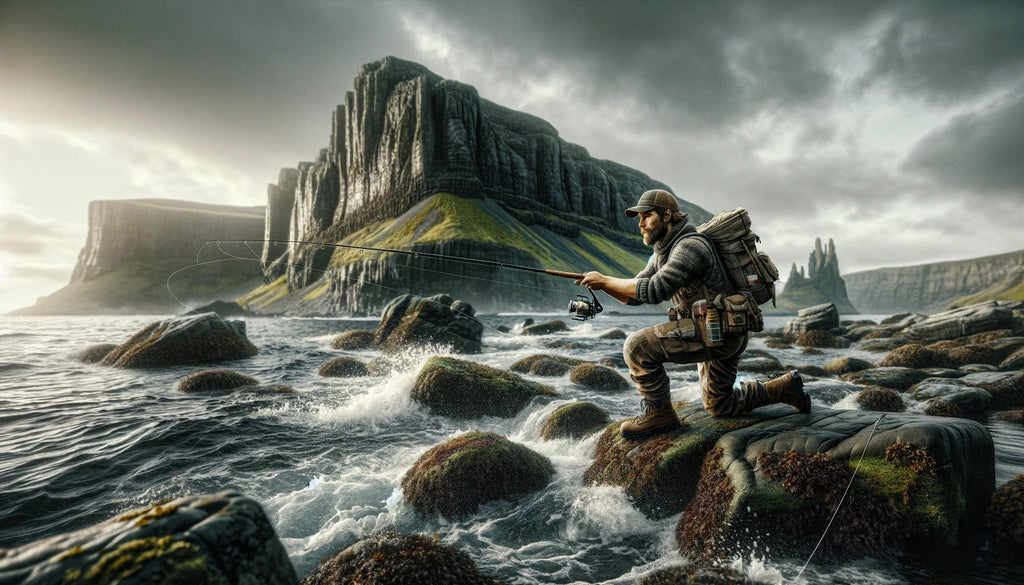
2. Overcoming Challenges
a. Dealing with weather and environmental challenges
Weather can be unpredictable, especially in remote outdoor settings. As an experienced backpacker, I've learned the importance of preparing for and adapting to weather changes.
Before setting out, check the weather forecast and pack accordingly. However, be prepared for sudden changes. Quick-drying clothing, waterproof gear, and layering options are essential. In terms of fishing, different weather conditions can affect fish behavior. For instance, overcast skies can lead to more active fish, while extreme heat or cold might require you to adjust your techniques.
b. Safety measures and emergency preparedness
Safety should be your top priority. Before embarking on your trip, ensure you have a well-stocked first aid kit and are familiar with basic wilderness first aid. This knowledge can be crucial in case of minor injuries or emergencies.
In terms of communication, always let someone know your itinerary and expected return time. In remote areas, consider carrying a satellite phone or a personal locator beacon for emergencies.
Remember, nature is unpredictable, and being prepared can make all the difference. Carry a map and compass and know how to use them, as GPS devices can fail. Finally, always respect wildlife and understand how to safely coexist with the animals you may encounter on your journey.
Combining backpacking and fishing can be an immensely rewarding experience. With careful planning, respect for nature, and an open mind, you can create memories that will last a lifetime. Whether you're casting a line in a serene lake or trekking through rugged trails, embrace the adventure and the lessons it brings.
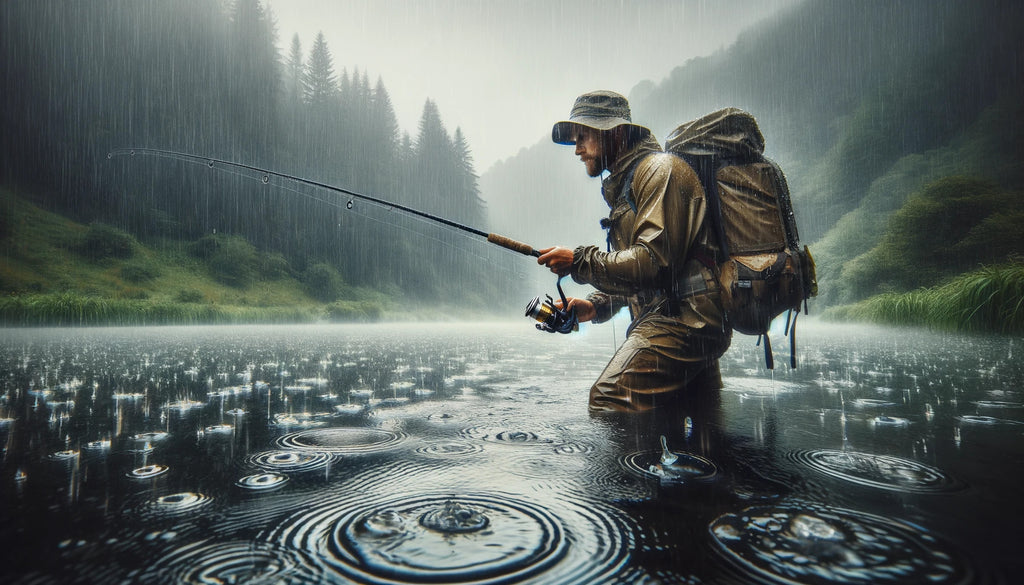
V. Top 5 Fishing Destinations for Backpackers
Here are some of the most captivating US fishing destinations, perfect for combining with your backpacking adventures. Each of these locations offers a unique experience, setting the stage for both thrilling catches and tranquil moments in nature.
1. Fly Fishing in the Catskills, New York
A Fly Fisher’s Paradise: The Catskills region in New York is synonymous with fly fishing. It's rich in history and brimming with streams and rivers, making it a prime destination for anglers.
Highlights:
- Diverse Fish Species: Renowned for its abundant trout, including brown, brook, and rainbow varieties.
- Historic Fishing Spots: Home to legendary streams like the Beaverkill and Willowemoc.
- Local Expertise: For an in-depth guide to the area, including tips on the best spots, check out fly fishing in the Catskills.
2. Gunnison River, Colorado
Chasing Trophy Trout: Colorado's Gunnison River is a dream destination for those seeking large, hard-fighting trout. Its Gold Medal waters promise a rewarding fishing experience.
Highlights:
- Varied Fishing Environments: Offers both serene sections and challenging rapids.
- Spectacular Scenery: The river flows through stunning landscapes, including the Black Canyon.
- Abundant Wildlife: The surrounding wilderness is teeming with wildlife, adding to the overall experience.
3. Great Smoky Mountains, Tennessee and North Carolina
A Blend of Hiking and Angling: The Great Smoky Mountains offer a vast expanse of nature, with countless streams teeming with trout and miles of hiking trails.
Highlights:
- Diverse Ecosystems: Explore lush forests and mist-covered mountains.
- Stream Accessibility: Many streams are easily accessible from hiking trails.
- Park Resources: Park rangers can provide updated information on fishing conditions and wildlife in the area.
4. Kenai River, Alaska
The Salmon Capital: Alaska's Kenai River is a mecca for salmon fishing, attracting anglers from all over the world. The river's vibrant ecosystem supports a healthy population of various salmon species.
Highlights:
- World-Class Salmon Runs: Known for its king, sockeye, and silver salmon runs.
- Breathtaking Alaskan Wilderness: The river flows through picturesque landscapes, including national wildlife refuges.
- Guided Expeditions: Local guides offer valuable insights and enhance your fishing experience.
5. Henry's Fork, Idaho
A Revered Fly Fishing Spot: Henry's Fork, part of the Snake River in Idaho, is celebrated for its abundant rainbow trout and serene fishing settings.
Highlights:
- Pristine Waters: The river is renowned for its clear, calm waters, ideal for fly fishing.
- Challenging Fishing: Offers opportunities for both novice and experienced anglers.
- Surrounding Attractions: The area is also known for its stunning waterfalls and diverse wildlife.
Enhancing Your Fishing Adventure
Regardless of which destination you choose, remember these key tips to make the most of your experience:
- Respect Local Regulations: Familiarize yourself with fishing rules and regulations in each area.
- Environmental Stewardship: Practice sustainable fishing and Leave No Trace principles.
- Prepare for the Elements: Weather can be unpredictable, so pack accordingly and stay informed about local conditions.
These destinations, from the historic streams of the Catskills to the rugged wilderness of Alaska, offer more than just fishing; they provide an adventure into some of the most breathtaking landscapes where every cast brings a new story.
Conclusion
As we draw this guide to a close, it’s important to reflect on the essence of combining backpacking and fishing - a harmonious blend of challenge, adventure, and tranquility. From the meticulous planning of your expedition to the joy of landing a fish against a backdrop of pristine nature, each step of this journey offers an opportunity for growth, learning, and unparalleled satisfaction.
Whether you choose to venture solo or in a group, remember that the heart of these activities lies in their ability to connect us more deeply with the natural world. It’s about the rhythm of your feet on the trail, the gentle cast of a line, and the quiet anticipation of a catch. It’s about the stories you’ll tell and the memories you’ll cherish.
But, with these joys come responsibilities - to yourself, to others, and to the environment. Safety, preparedness, and environmental stewardship are not just best practices, they are essential. As you embark on your adventures, carry these principles with you, just as you would your gear.
In essence, backpacking and fishing are more than hobbies; they are journeys that test and reward, that teach patience, resilience, and respect. So, pack your bag, set your sights on the horizon, and step into the wild with confidence and reverence for the incredible experiences that await.
FAQ
What is the best time of year for backpacking and fishing?
The ideal time varies depending on the region and the type of fish you’re targeting. Generally, spring and fall offer moderate weather and active fish, making them excellent choices for most areas.
How do you choose a fishing spot while backpacking?
Look for spots where fish are likely to feed, such as areas with insects flying close to the water's surface, or where the water is deeper and cooler. Rivers with bends, and areas with underwater structures, are often fruitful.
What are some common mistakes to avoid in both activities?
Overpacking, neglecting weather forecasts, insufficient preparation in skills and fitness, and overlooking local regulations are common pitfalls. It’s crucial to plan meticulously and adapt to changing conditions.
How can I ensure my safety while backpacking and fishing?
Always inform someone about your trip details, carry a first-aid kit, understand the weather patterns, have emergency communication means, and be familiar with basic survival skills.
What are some ways to minimize environmental impact?
Practice Leave No Trace principles, avoid disturbing wildlife, use biodegradable products, and ensure that all waste is packed out or disposed of properly.
Can beginners combine backpacking with fishing, and how?
Yes, beginners can combine these activities. Start with short trips, learn the basics of both backpacking and fishing, and gradually increase the complexity of your expeditions.
What are some essential skills for fishing during a backpacking trip?
Understanding the basics of fishing gear, learning how to read water bodies, fish identification, and catch-and-release techniques are essential. Local fishing regulations should also be understood.
How do you preserve fish if you’re multiple days into a backpacking trip?
Without refrigeration, the best practice is to consume the fish soon after catching. In colder climates, you can store fish in a cool stream, but always abide by local wildlife safety guidelines.
What are some recommended locations for beginners?
National parks or wilderness areas with established trails and known fishing spots are ideal. Places like the Great Smoky Mountains, the Adirondacks, or the Sierra Nevada offer great starting points.
How can I learn more about local fish species and regulations?
Consult local wildlife agencies, fishing guides, and online resources. Many regions have specific guidelines and educational materials available for both backpacking and fishing enthusiasts.

















Leave a comment